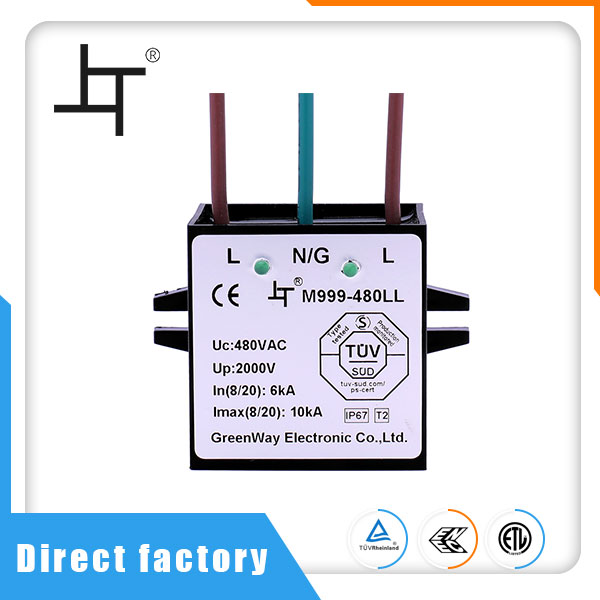
The Surge Protection Device (SPD) is a component of the electrical installation protection system.
Principle
Surge Protection Device is designed to limit transient over-voltages of atmospheric origin and divert current waves to earth, so as to limit the amplitude of this overvoltage to a value that is not hazardous for the electrical installation and electric switch gear and control gear.
Surge Protection Device eliminates overvoltages
§ in common mode, between phase and neutral or earth;
§ in differential mode, between phase and neutral.
In the event of an overvoltage exceeding the operating threshold, the SPD
§ conducts the energy to earth, in common mode;
§ distributes the energy to the other live conductors, in differential mode.
The three types of Surge Protection Device
Type 1 Surge Protection Device
The Type 1 Surge Protection Device is recommended in the specific case of service-sector and industrial buildings, protected by a lightning protection system or a meshed cage.
It protects electrical installations against direct lightning strokes. It can discharge the back-current from lightning spreading from the earth conductor to the network conductors.
Type 1 Surge Protection Device is characterized by a 10/350 µs current wave.
Type 2 Surge Protection Device
The Type 2 Surge Protection Device is the main protection system for all low voltage electrical installations. Installed in each electrical switchboard, it prevents the spread of overvoltages in the electrical installations and protects the loads.
Type 2 Surge Protection Device is characterized by an 8/20 µs current wave.
Type 3 Surge Protection Device
These Surge Protection Devices have a low discharge capacity. They must therefore mandatorily be installed as a supplement to Type 2 SPD and in the vicinity of sensitive loads.
Type 3 Surge Protection Device is characterized by a combination of voltage waves (1.2/50 μs) and current waves (8/20 μs).